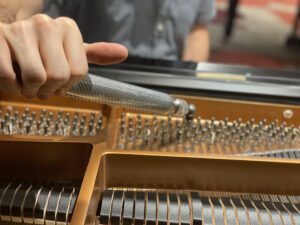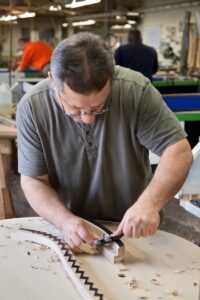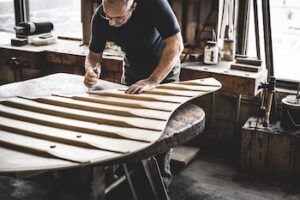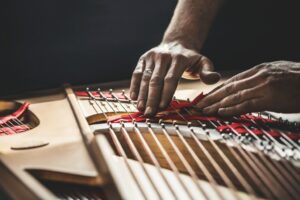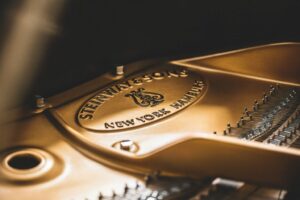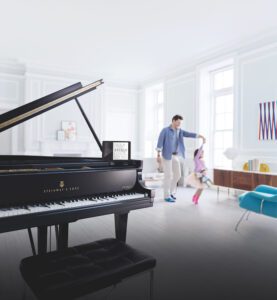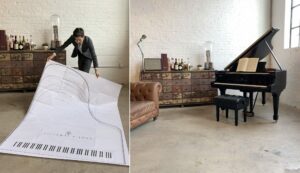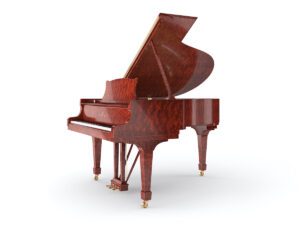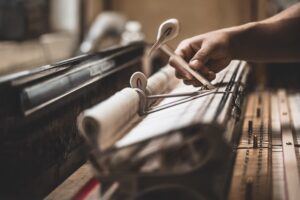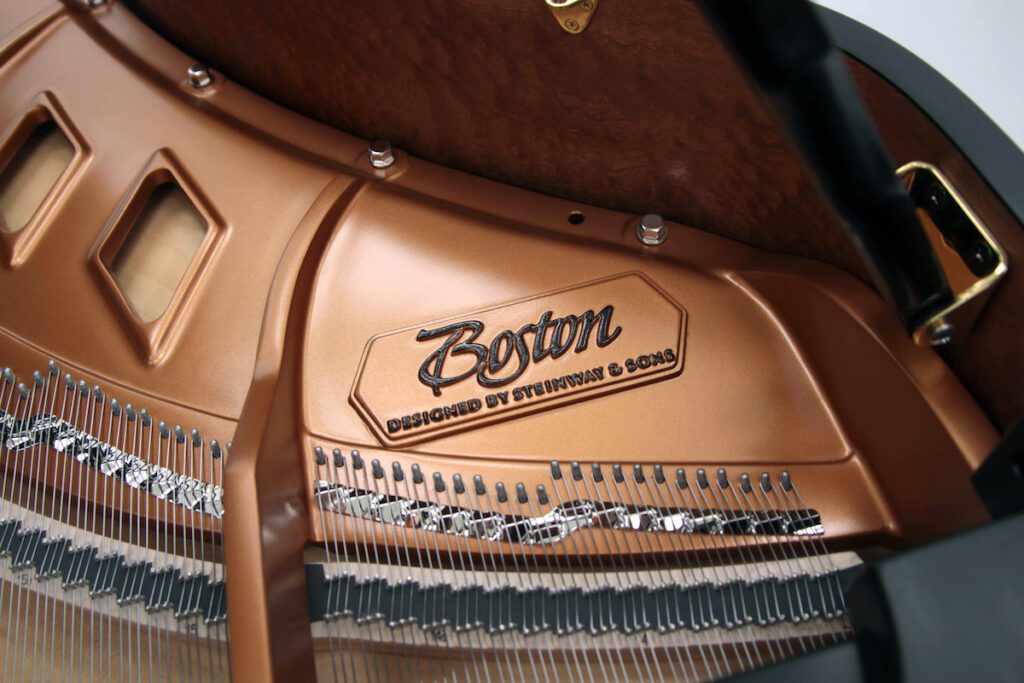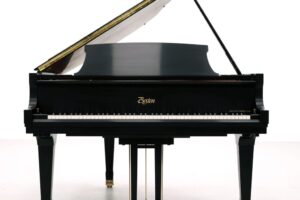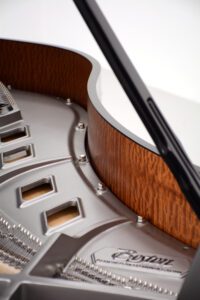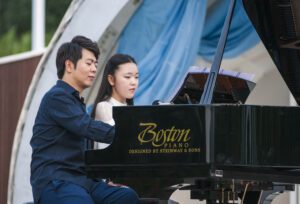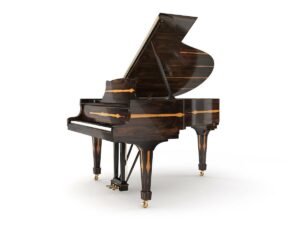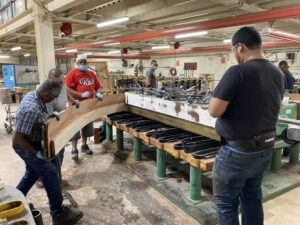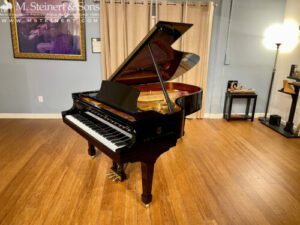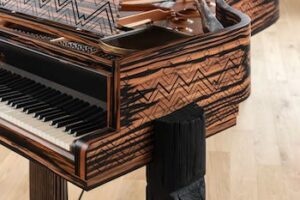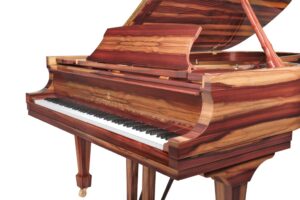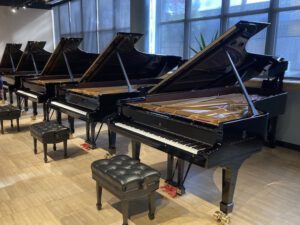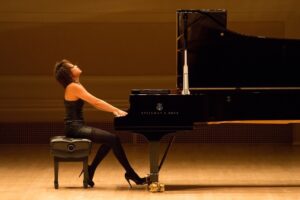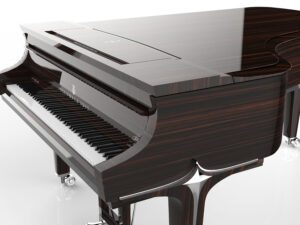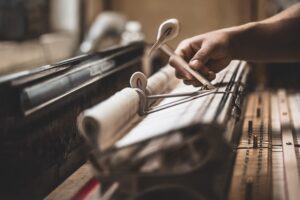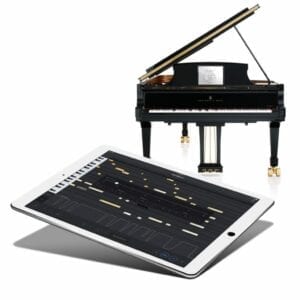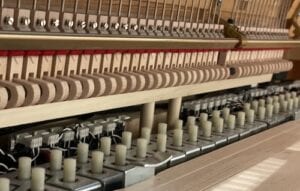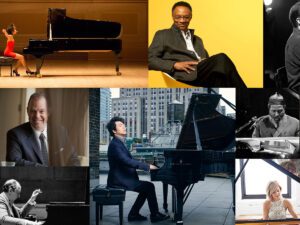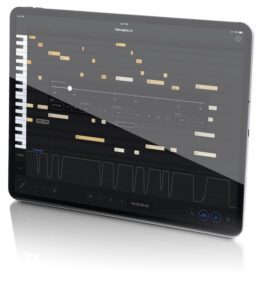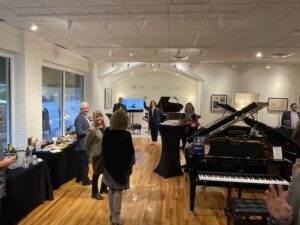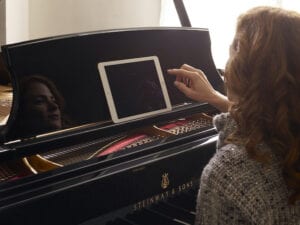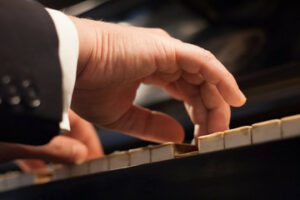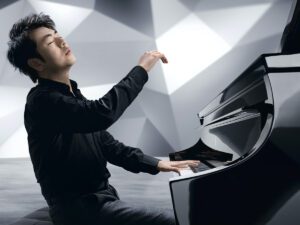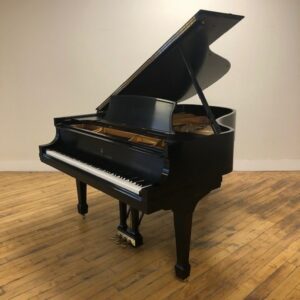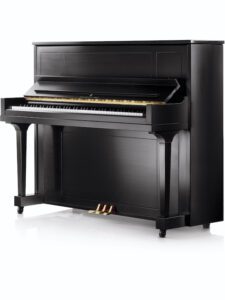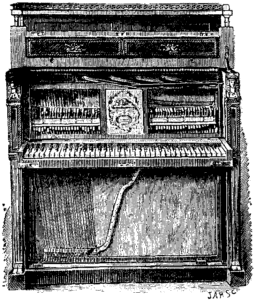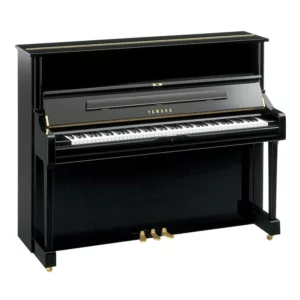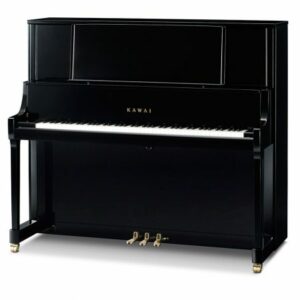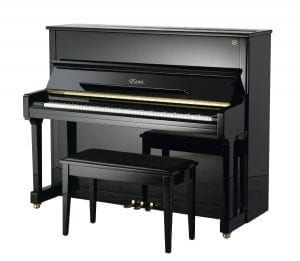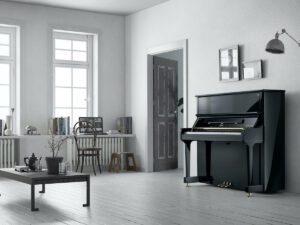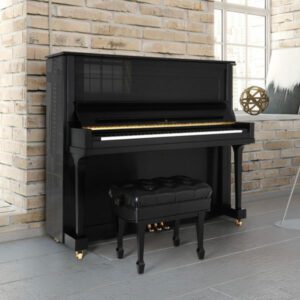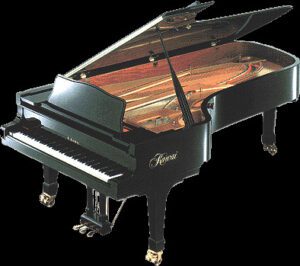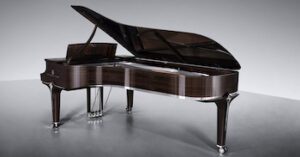What is the Golden Age of Steinway pianos? Could it be now?
by Stephen N. Reed
There is a common tendency to romanticize certain old pianos, particularly old Steinways. This has led many piano buyers down a path of subsequent disappointment, regret, and buyer’s remorse.
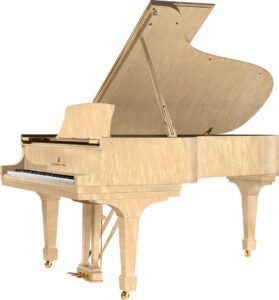
Perhaps the best example of this is the so-called “Golden Age of Steinway,” which purports that the best Steinways were built decades in the past.
This has become a serious education problem as some used piano dealers, old piano rebuilders, and private technicians compete with Authorized Steinway Dealers and the new Steinways only they can sell.
Throughout Steinway’s history, such used Steinway sellers have spread the myth of a previous, mythical “Golden Age” of old Steinway years that cover the period of time when Steinways typically become worn out–any age exceeding 75 years. In other words, when a used Steinway needs restoration.
After all, these are the kind of Steinway pianos they can sell. And it can be big business at times. During the first third of the 20th century, Steinway produced a large number of pianos per year, and thus, a large number remains on the used market.
So as you hear about this distant “Golden Age of Steinway,” you need to know if there is any truth to it.
M. Steinert & Sons has been an Authorized Steinway Dealer for over 150 years and has helped tens of thousands of customers determine the right piano for them.
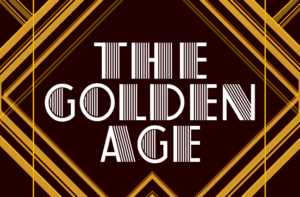
This sometimes includes disabusing some customers of notions like a past “Golden Age of Steinway” so that they can know the truth of a used Steinway’s value.
By the time you have read this article, you will understand some facts about the evolutionary development of the Steinway piano. You will understand that, while some good used Steinways are out there, the most recently produced, new Steinway will always be the best one.
The Steinway piano’s background and evolution
The piano is now 322 years old (c.1700), and over 12,000 brand names have come and gone. Many piano historians and musicians agree that Steinway & Sons pianos have long been the pianos by which all others are judged.
Throughout its 169-year history, Steinway & Sons has consistently included piano engineering and improvement as a key part of its ethos. They have experimented with countless piano ideas, theories, designs, styles, types, and sizes of pianos–some of them abject failures–others quite successful, even to the point of shaping the modern piano across various brands.
Some piano innovations rejected, others accepted by Steinway
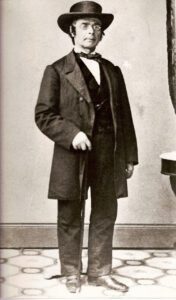
Many of these evolving models, through years of experimentation and testing, were rejected as the company’s steadily accumulating knowledge of acoustical, mathematical, chemical, engineering, physical, and musical science consistently increased.
Other designs were retained due to their proven excellence over time, methodically being improved and refined into today’s ultimate Steinway–the historical apex of Steinway technology and musicality.
A new piano patent is granted to Steinway every 14 months
On average a new engineering patent has been granted to Steinway & Sons every 14 months throughout its history. Today’s 2022 newest designs incorporate a remarkable 139 improvements–13 in the last 10 years alone.
The Steinway ethos is demonstrably one of pursuit–ever-changing, ever-evolving, never content with yesteryear. This constant improvement may be one of the reasons why upwards of 95% of piano performers worldwide prefer Steinway.
A Case Study Of The Evolution of Steinway
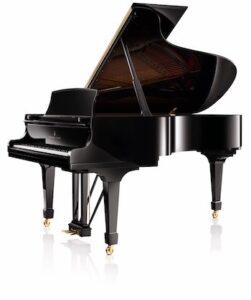
To illustrate this Steinway evolutionary process in greater detail, there has been one particular size and design of Steinway home grand–apart from the large Model D concert grand (9′).
This is a Steinway model that has become the favorite of professionals and accomplished amateurs alike in every generation of its continuous development: the Model B.
The “B” has evolved over a period of 149 years with a redesign occurring on average every 15 years–a total of 10 Model B “evolutionary eras.”
The changes to the Model B listed in the following chart are only a few in each generation of Model B, but this chart should prove the steady evolution of this as a representative Steinway model throughout Steinway’s design innovation history:
| Years | Keys | Size | Model B Design Changes |
| 1872 – 1878 | 85 | 6’ 8” | Agraffes throughout entire scale. Sectional case, curved tail square rear corner. The case had round arms, wide double mouldings around the bottom. |
| 1878 – 1884 | 85 | 6’ 8” | Substituting capo d’astro bar in place of agraffes for notes 52-85. Duplex agraffe. Keyframe leveling screw. Action w/Support Spring. |
| 1884 – 1892 | 85 | 6’10.5″ | Substituting double cupola plate for single cupola; adjustable front duplexes for notes 52-85 in place of front-duplex clipped agraffes. Treble Bell. |
| 1891 – 1914 | 88 | 6’10.5″ | Expansion of 85 notes to 88 notes. Capo d’astro bar (notes 52-88) |
| 1914 – 1917 | 88 | 6’11.5″ | 1” increase change in overall scale design. Grand underlever Top Flange w/Flexible Tab. |
| 1917 – 1967 | 88 | 6’11” | ½” reduction change in overall scale design. 1936 Diaphragmatic Soundboard and Accelerated Action patents. 1923 all-maple rims. |
| 1967 – 2005 | 88 | 6’10.5″ | ½’ reduction change in overall scale design. 1963 Hexagrip Pinblock patent. Permafree II bushing cloth w/emrilon. |
| 2005 – 2015 | 88 | 6’11” | ½” increase change in overall scale design. Damper adjustment device. |
| 2015 – 2019 | 88 | 6’11” | Spirio ultra high-resolution re-performance system.
1020 dynamic levels and 256 levels of proportional pedaling of live recordings. |
| 2019 + | 88 | 6’11” | Spirio/r ultra high-resolution re-performance system.
1020 dynamic levels and 256 levels of proportional pedaling of live recordings. Plus capture and playback and editing. |
Why the Golden Age of Steinway is Now
Only 60 Steinway piano dealerships are in the United States. These are the only piano retail locations officially authorized to sell new Steinways which incorporate all of Steinway’s 139 patents and most recent technological breakthroughs such as the Spirio capturing and re-performance systems.
These new Steinways are also the only pianos that are honored with a new five-year Steinway factory warranty covering major structural components that can only be replaced at the factory with proprietary factory equipment and labor.
A new Steinway with all of the latest innovations, paired with a five-year Steinway factory warranty, has the best claim on any “Golden Age” Steinway.
One reason for this is that, as in the past, Steinway continues to use the best materials and latest technologies in each year’s run of new pianos.
Old Steinway pianos may come with good restoration–but some restorers overstep the truth
Piano retailers whose survival relies on the restoration of outdated Steinway engineering designs may do an acceptable job restoring old Steinway designs.
However, they overstep and mislead when they falsely claim that the older Steinway designs, materials, and workmanship are superior to today’s models or that their restoration workmanship is “unparalleled.” Such statements are simply a case of exaggeration.
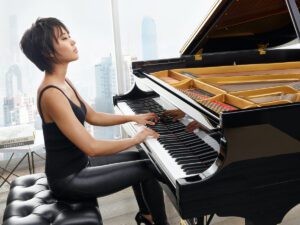
The truth is that the used piano designs these firms are restoring are now in many respects technologically and musically obsolete. In some cases, the technologies, equipment, materials, and expertise necessary to the construction of current Steinway designs are not available to them.
The accuracy, precision, material excellence, manufacturing methodologies, equipment, and advanced designs of the newest Steinways far exceed those of previous generations.
Today’s leading music conservatories and symphonies categorically invest only in new Steinways for their performance halls and faculty studios. Few would disagree that such institutions want only the best Steinways for their uses.
Some good, used Steinways certainly are out there. However, the best Steinways have always been and still are new. The only genuine Steinway Golden Age is today.
To learn more about New and Used Steinways, read the following articles:
Choosing between a new and used Steinway
New vs. Used Steinway: Which is the better value for me?
Pros and Cons of new and rebuilt Steinway


